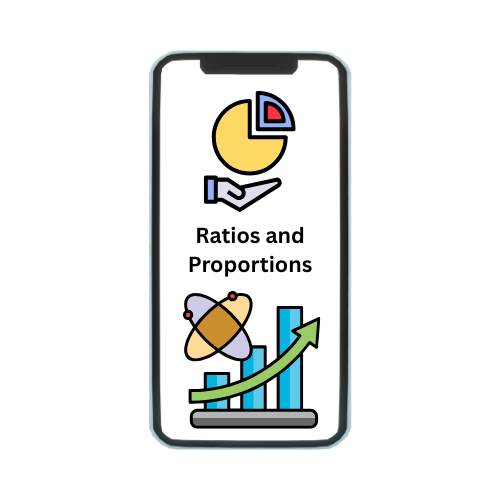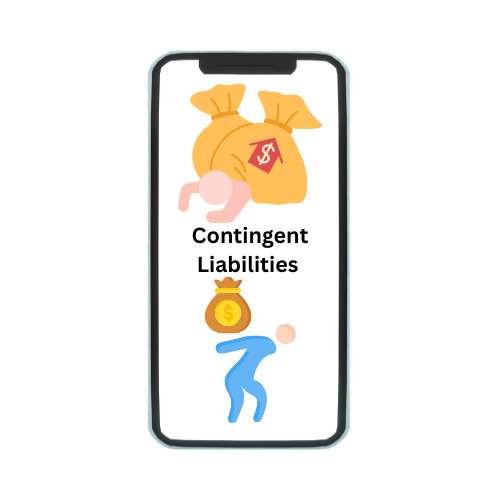Deficit spending refers to the practice of a government or organization spending more money than it receives in revenue, resulting in a budget deficit. This occurs when expenditures surpass income, necessitating borrowing or the issuance of debt to cover the shortfall. Typically, deficit spending is employed as a fiscal policy tool during economic downturns or recessions, aimed at stimulating economic growth by increasing aggregate demand. While it can boost economic activity in the short term, prolonged or excessive deficit spending may lead to higher public debt, potentially affecting a country’s credit rating and long-term financial stability. Balancing the benefits of immediate economic stimulation against the risks of increased debt is a critical aspect of fiscal management.
Understanding Deficit Spending
Deficit spending is a fiscal strategy where a government or organization spends more money than it generates in revenue, resulting in a budget deficit. This approach often involves borrowing funds to finance the excess expenditures, typically through issuing government bonds or other debt instruments. The primary aim of deficit spending is to stimulate economic activity, particularly during periods of economic slowdown or recession, by increasing public spending and investment. By injecting additional funds into the economy, it can help boost demand, create jobs, and spur growth. However, sustained deficit spending may lead to increased national debt and higher interest payments, potentially impacting the long-term financial health and creditworthiness of the borrowing entity. Effective management of deficit spending requires balancing short-term economic benefits with the potential long-term implications of rising debt levels.
Reasons for Deficit Spending
- Economic Stimulus: Governments often engage in deficit spending to counteract economic downturns or recessions. By increasing spending on infrastructure, social programs, and other public investments, they aim to boost aggregate demand, create jobs, and stimulate economic growth.
- Public Investment: Large-scale projects, such as building roads, bridges, and schools, often require substantial upfront costs. Deficit spending allows for these investments without the need for immediate tax increases, which can be politically or economically challenging.
- Emergency Response: In times of crisis, such as natural disasters or pandemics, deficit spending can provide the necessary funds for emergency relief efforts, healthcare, and recovery programs, helping to address urgent needs effectively.
- Debt Management: Sometimes, deficit spending is used to refinance existing debt or manage interest payments, particularly in environments with low interest rates. This can help stabilize or reduce the cost of borrowing over time.
- Social Programs: Funding for social programs and welfare benefits often exceeds available revenue, especially in aging populations or underdeveloped regions. Deficit spending helps to maintain or expand these essential services without immediate fiscal constraints.
Types of Deficit Spending
- Structural Deficit Spending: This type arises from persistent imbalances between a government’s long-term revenues and expenditures, regardless of the economic cycle. It reflects fundamental issues in fiscal policy, often requiring structural reforms to address ongoing budgetary gaps.
- Cyclical Deficit Spending: Occurring during economic downturns, cyclical deficit spending is a response to temporary declines in revenue and increased spending needs. It aims to counteract the effects of economic recessions by stimulating growth through increased public expenditure.
- Deficit Spending for Public Investment: This type involves borrowing to fund large infrastructure projects or other significant investments that are expected to generate long-term economic benefits. The goal is to enhance future productivity and growth, despite the initial increase in debt.
- Emergency Deficit Spending: Utilized in response to immediate crises, such as natural disasters or health emergencies, this type of spending provides quick financial relief to address urgent needs and recovery efforts. It often leads to short-term deficits with the intention of stabilizing or restoring normalcy.
- Expansionary Deficit Spending: During periods of economic growth, governments may engage in deficit spending to finance additional initiatives or programs aimed at sustaining momentum and promoting further economic development. This type of spending is intended to leverage current economic conditions to achieve long-term goals.
- Recurrent Deficit Spending: This occurs when a government consistently spends more than it earns over multiple fiscal periods. It can signal ongoing fiscal imbalances and often requires periodic borrowing to cover the ongoing deficit, potentially leading to rising national debt.
Impact of Deficit Spending on the Economy
- Economic Growth: Deficit spending can stimulate economic growth by increasing aggregate demand. This can lead to higher employment, greater business investment, and overall economic expansion, particularly during recessions or periods of slow growth.
- Interest Rates: Increased government borrowing can drive up interest rates, as higher demand for credit may lead to higher costs of borrowing. This can crowd out private investment, potentially slowing down business expansion and innovation.
- Inflation: In the short term, deficit spending may contribute to inflationary pressures if it leads to excessive demand relative to supply. Higher inflation can erode purchasing power and create uncertainty in the economy.
- Public Debt: Persistent deficit spending contributes to rising public debt levels. While initially manageable, high debt levels can lead to increased interest payments and potentially higher taxes in the future to service the debt, affecting long-term fiscal sustainability.
- Credit Rating: High levels of deficit spending and public debt can impact a country’s credit rating. A lower credit rating can increase borrowing costs and reduce investor confidence, which may further exacerbate economic challenges.
Pros and Cons of Deficit Spending
Pros:
- Economic Stimulus: Deficit spending can boost economic activity during downturns by increasing government expenditures, which can stimulate demand, create jobs, and help pull an economy out of recession.
- Public Investment: It allows for substantial investments in infrastructure, education, and healthcare that might otherwise be unaffordable. These investments can enhance long-term economic growth and improve quality of life.
- Crisis Management: During emergencies, such as natural disasters or financial crises, deficit spending enables quick deployment of resources to address immediate needs and support recovery efforts.
- Job Creation: Increased government spending can lead to job creation in both public and private sectors, reducing unemployment and underemployment.
Cons:
- Increased Public Debt: Persistent deficit spending raises national debt levels, leading to higher interest payments and potentially straining future budgets. This can limit fiscal flexibility and increase the burden on future generations.
- Higher Interest Rates: Increased borrowing can drive up interest rates, which may crowd out private investment and reduce economic growth potential in the long term.
- Inflation Risks: Excessive deficit spending, especially in an already growing economy, can lead to inflationary pressures, reducing purchasing power and creating economic instability.
- Reduced Fiscal Flexibility: High levels of debt can constrain a government’s ability to implement new policies or respond to future economic challenges effectively, as more resources are allocated to debt servicing.
- Credit Rating Impact: Large and persistent deficits can negatively affect a country’s credit rating, increasing borrowing costs and potentially leading to reduced investor confidence.
The Role of Deficit Spending in Economic Theories
- Keynesian Economics: In Keynesian theory, deficit spending is a vital tool for managing economic cycles. Keynesians argue that during economic downturns, increased government spending can boost aggregate demand, reduce unemployment, and stimulate economic growth. This counter-cyclical approach aims to smooth out business cycle fluctuations and mitigate recessions.
- Classical Economics: Classical economists are generally skeptical of deficit spending, emphasizing balanced budgets and minimal government intervention. They believe that deficits can crowd out private investment and lead to inefficiencies. According to this view, long-term economic growth is best achieved through market-driven mechanisms and fiscal discipline.
- Monetarist Theory: Monetarists, following Milton Friedman, argue that managing the money supply is more effective than using deficit spending to control economic fluctuations. They believe that excessive deficit spending can lead to inflation and disrupt economic stability, advocating instead for steady and predictable monetary policy.
- Supply-Side Economics: Supply-side economists view deficit spending as potentially beneficial if it funds investments that enhance productivity and economic capacity. They argue that reducing taxes and investing in capital goods can lead to economic growth, even if it involves short-term deficits. However, they emphasize that deficits should be managed to avoid long-term fiscal imbalances.
- Modern Monetary Theory (MMT): MMT advocates suggest that governments with sovereign currencies can engage in deficit spending more freely, as they can issue money to cover deficits. According to MMT, as long as inflation is controlled, deficit spending can support full employment and economic stability without necessarily leading to unsustainable debt.
Managing Deficit Spending
- Fiscal Responsibility: Maintaining fiscal discipline is crucial for managing deficit spending. This involves setting clear budgetary goals, adhering to spending limits, and ensuring that deficits do not exceed manageable levels. Governments should prioritize essential expenditures and avoid unnecessary or discretionary spending that exacerbates the deficit.
- Debt Management: Effective debt management strategies are essential. This includes restructuring debt to take advantage of favorable interest rates, extending maturities to reduce immediate repayment pressures, and diversifying sources of borrowing to mitigate risk. Proper debt management can help keep borrowing costs under control and ensure sustainable levels of debt.
- Economic Growth Initiatives: Investing in initiatives that drive economic growth can help manage deficits. By focusing on projects that enhance productivity, innovation, and job creation, governments can increase revenues through higher economic activity and reduce the relative burden of deficits over time.
- Revenue Enhancement: Increasing revenue through tax reforms or improving tax compliance can help offset deficits. This may involve broadening the tax base, closing loopholes, or enhancing enforcement to ensure that revenues are sufficient to meet expenditure needs without excessive borrowing.
- Expenditure Reviews: Regularly reviewing and prioritizing government spending helps identify areas where cuts or efficiencies can be made. Streamlining expenditures, eliminating waste, and ensuring that spending is targeted towards high-impact areas can help reduce the deficit.
Real-World Applications
- Economic Stimulus Packages: During economic downturns, such as the 2008 financial crisis and the COVID-19 pandemic, governments have implemented stimulus packages involving substantial deficit spending. These packages typically include direct financial aid to individuals, increased unemployment benefits, and support for businesses to stabilize the economy and promote recovery.
- Infrastructure Investments: Many countries use deficit spending to finance large infrastructure projects, such as highways, bridges, and public transportation systems. For instance, the United States has seen significant deficit spending for infrastructure through initiatives like the American Recovery and Reinvestment Act of 2009 and various public works programs aimed at enhancing economic productivity and creating jobs.
- Welfare Programs: Deficit spending is often employed to fund social welfare programs, including healthcare, education, and pension schemes. For example, the expansion of social safety nets in countries like Sweden and the UK has involved borrowing to ensure comprehensive support for citizens, particularly in times of economic stress or demographic changes.
Conclusion
Deficit spending, while a powerful tool for managing economic fluctuations and addressing immediate fiscal needs, carries both significant benefits and risks. On the positive side, it can stimulate economic growth during recessions, fund critical public investments, and provide essential support during emergencies. However, the long-term implications of persistent deficits, such as increased public debt, potential inflation, and higher interest rates, require careful management and strategic planning. Balancing the short-term advantages of deficit spending with the necessity for sustainable fiscal policies is crucial. Effective management involves maintaining fiscal discipline, investing in growth-promoting projects, enhancing revenue streams, and ensuring transparency and accountability. By adopting a well-rounded approach, governments can harness the benefits of deficit spending while mitigating its potential drawbacks, ultimately striving for economic stability and long-term financial health.







